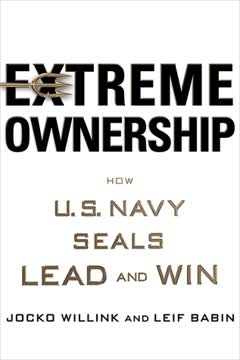Key Takeaways
1. Teams are the fundamental unit of organizational performance
Teams outperform individuals acting alone or in larger organizational groupings, especially when performance requires multiple skills, judgments, and experiences.
Teams drive performance. In today's complex business environment, the collective effort of a team often surpasses individual contributions. Teams bring together complementary skills, experiences, and perspectives, enabling them to tackle multifaceted challenges more effectively than individuals working in isolation.
Teams offer flexibility and responsiveness. Unlike larger organizational structures, teams can be quickly assembled, deployed, and refocused to address specific performance challenges. This agility allows organizations to adapt swiftly to changing market conditions and customer needs.
Teams foster commitment and accountability. When individuals work as part of a team, they develop a shared sense of purpose and mutual accountability. This collective commitment often leads to higher levels of motivation, creativity, and overall performance than would be achieved through individual efforts alone.
2. Real teams have specific characteristics that set them apart
A team is a small number of people with complementary skills who are committed to a common purpose, performance goals, and approach for which they hold themselves mutually accountable.
Key elements of real teams:
- Small number (typically less than 20)
- Complementary skills
- Common purpose
- Specific performance goals
- Shared working approach
- Mutual accountability
Size matters. Smaller groups can interact more effectively, make decisions faster, and develop stronger bonds. Large groups often struggle with communication and coordination, leading to suboptimal performance.
Skill complementarity is crucial. Real teams bring together individuals with diverse but complementary skills, including technical expertise, problem-solving abilities, and interpersonal skills. This mix allows the team to tackle complex challenges from multiple angles.
3. The team performance curve illustrates different group dynamics
The "team performance curve" illustrates that how well any small group of people performs depends on the basic approach it takes and how effectively it implements that approach.
The team performance curve identifies five key points:
- Working group
- Pseudo-team
- Potential team
- Real team
- High-performance team
Working groups vs. teams. Working groups rely on individual contributions, while teams strive for collective performance that exceeds the sum of individual efforts. The choice between these approaches depends on whether individual achievements can meet performance goals or if collective work products are necessary.
Pseudo-teams underperform. Groups that call themselves teams but don't invest in developing team characteristics often perform worse than working groups. They incur the costs of attempting teamwork without reaping the benefits of true team performance.
4. High-performance teams exhibit exceptional commitment and results
High-performance teams are extremely rare. Despite the attention teams have been receiving, the true high-performance team—that is, one that outperforms all other like teams, and outperforms expectations given its composition—is very rare.
Characteristics of high-performance teams:
- Deep commitment to one another's personal growth and success
- Shared leadership roles
- Interchangeable skills
- Strong sense of team identity
- Exceptional results that surpass expectations
Personal commitment drives performance. In high-performance teams, members develop a level of commitment to each other that goes beyond typical professional relationships. This deep bond fuels their ability to achieve extraordinary results.
Shared leadership enhances flexibility. High-performance teams often exhibit fluid leadership, with different members taking charge based on their expertise and the situation at hand. This flexibility allows the team to leverage its collective strengths more effectively.
5. Becoming a team requires overcoming obstacles and taking risks
Conflict, like trust and interdependence, is also a necessary part of becoming a real team. Seldom do we see a group of individuals forge their unique experiences, perspectives, values, and expectations into a common purpose, set of performance goals, and approach without encountering significant conflict.
Key risks in team formation:
- Engaging in constructive conflict
- Building trust and interdependence
- Investing time and effort with no guarantee of success
- Overcoming individual biases and preferences
Constructive conflict is essential. Teams must learn to engage in productive disagreements to integrate diverse perspectives and develop innovative solutions. Avoiding conflict often leads to superficial agreement and suboptimal outcomes.
Trust and interdependence require vulnerability. Team members must be willing to rely on each other and share both successes and failures. This interdependence can be uncomfortable for individuals accustomed to working independently but is crucial for team success.
6. Effective team leadership balances action and patience
Team leaders should work to build the commitment and confidence of each individual as well as the team as a whole.
Key responsibilities of team leaders:
- Clarify purpose, goals, and approach
- Build commitment and confidence
- Strengthen the mix and level of skills
- Manage external relationships and remove obstacles
- Create opportunities for others
- Do real work alongside team members
Balance between action and patience. Effective team leaders know when to step in and provide direction and when to step back and let the team find its own way. This balance is crucial for developing team capability and ownership.
Leaders must do real work. Team leaders who actively contribute to the team's work products, rather than just delegating and reviewing, gain credibility and foster a culture of shared responsibility.
7. Teams play a crucial role in driving major organizational change
Teams will help direct, energize, and integrate such broad-based changes in behavior. They will set performance aspirations, intensify focus and commitment, energize work forces, build core skills, and spread knowledge to those who need it the most to perform.
Teams facilitate change in three key dimensions:
- Top-down culture-shaping initiatives
- Bottom-up goal achievement and problem-solving
- Cross-functional redesign and integration
Teams foster behavioral change. The dynamics of team performance naturally support learning and adaptation. As team members work together to achieve challenging goals, they develop new skills, perspectives, and ways of working.
Teams integrate across boundaries. Cross-functional teams can break down silos and promote organization-wide collaboration, which is essential for implementing major changes that affect multiple areas of the business.
8. Teams at the top face unique challenges but offer significant benefits
Teams at the top are the most difficult. The complexities of long-term challenges, heavy demands on executive time, and ingrained individualism of senior people conspire against teams at the top.
Challenges for top management teams:
- Difficulty in defining team-specific goals beyond overall company objectives
- Strong bias towards individual accountability and achievement
- Time constraints and competing priorities
- Resistance to mutual dependence among high-level executives
Benefits of top management teams:
- Enhanced decision-making through diverse perspectives
- Increased commitment to and alignment around strategic initiatives
- Modeling of teamwork for the rest of the organization
Overcoming ingrained habits. Senior executives often must consciously work to overcome habits of individual decision-making and control to embrace true team dynamics at the top level.
9. A strong performance ethic reinforces team effectiveness
We have observed a mutually reinforcing relationship between the strength of a company's performance ethic and the number and performance of teams.
Elements of a strong performance ethic:
- Clear, challenging performance goals
- Balanced focus on customers, employees, and shareholders
- Emphasis on accountability and results
- Culture of continuous improvement and innovation
Performance ethic drives team formation. Organizations with strong performance ethics naturally create conditions that favor team formation and effectiveness. Clear performance challenges often require collaborative efforts, leading to the emergence of teams.
Teams reinforce performance culture. Successful teams demonstrate the value of collaboration and shared accountability, further strengthening the organization's overall performance orientation.
10. Top management's role is crucial in fostering team performance
Top management's role regarding teams is changing. In the past, it largely has left the nourishment of teams to others. In seeking to improve performance, it has put its time and attention into changing strategies, individual assignments, larger organizational forms, management processes, and important leadership initiatives.
Key responsibilities for top management:
- Identify which teams matter most to organizational performance
- Help teams move up the performance curve
- Address unique issues for different types of teams (e.g., teams that run things, teams that recommend things, teams that make or do things)
- Align policies and resources to support team performance
- Model team behavior at the senior level
Focus on performance, not teams for their own sake. Top management should emphasize team performance as a means to achieve organizational goals, rather than promoting teams as an end in themselves.
Provide supportive infrastructure. Executives must ensure that organizational systems, processes, and policies support and reward team performance alongside individual contributions.
Last updated:
FAQ
What's The Wisdom of Teams about?
- Focus on Team Performance: The book emphasizes how teams can enhance organizational performance by leveraging collective skills and mutual accountability.
- Real vs. Pseudo Teams: It distinguishes between real teams with a common purpose and mutual accountability, and pseudo-teams that lack these elements.
- Practical Insights: Offers practical insights and models based on real-world examples to illustrate how teams can achieve high performance.
Why should I read The Wisdom of Teams?
- Enhance Team Effectiveness: Provides strategies to improve team dynamics and performance, making it valuable for anyone involved in team settings.
- Real-World Examples: Rich with case studies and stories from various organizations, making concepts relatable and applicable.
- Leadership Insights: Offers insights for leaders on fostering a team-oriented culture and navigating team dynamics challenges.
What are the key takeaways of The Wisdom of Teams?
- Team Basics: Essential elements for team success include complementary skills, a common purpose, specific goals, and mutual accountability.
- High-Performance Teams: Rare and characterized by deep interpersonal commitments that drive exceptional results.
- Team Performance Curve: Illustrates progression from working groups to high-performance teams through specific actions and commitments.
What is the definition of a team according to The Wisdom of Teams?
- Core Definition: A team is a small group with complementary skills committed to a common purpose and mutual accountability.
- Importance of Commitment: Emphasizes commitment to both the team's purpose and each other for high performance.
- Focus on Performance: Collective accountability and pursuit of shared goals are central, rather than individual contributions.
What are the characteristics of high-performance teams in The Wisdom of Teams?
- Deep Interpersonal Commitment: Members genuinely care about each other's success and growth.
- Shared Leadership: Leadership is often shared, allowing for dynamic decision-making and problem-solving.
- Fun and Engagement: A sense of fun and camaraderie contributes to effectiveness and morale.
How does The Wisdom of Teams suggest teams can overcome obstacles?
- Focus on Performance: Maintain a rigorous focus on performance and team dynamics basics to navigate challenges.
- Constructive Conflict: Engage in constructive conflict to address differences and build a stronger collective purpose.
- Continuous Learning: Learn from successes and failures to refine processes and enhance performance.
What is the "team performance curve" mentioned in The Wisdom of Teams?
- Performance Levels: Illustrates progression from working groups to high-performance teams, highlighting potential for increased performance.
- Five Key Points: Identifies working group, pseudo-team, potential team, real team, and high-performance team as stages of effectiveness.
- Importance of Choice: Emphasizes consciously choosing to pursue team dynamics and the risks involved in moving between levels.
What are some practical steps to become a real team as outlined in The Wisdom of Teams?
- Establish Common Purpose: Define a clear and meaningful purpose that resonates with all members.
- Set Specific Goals: Establish measurable performance goals for tracking progress and accountability.
- Encourage Open Communication: Create an environment for open dialogue and constructive conflict to integrate diverse perspectives.
What are the best quotes from The Wisdom of Teams and what do they mean?
- "Teams outperform individuals acting alone.": Emphasizes that collective effort leads to greater success than individual work.
- "The monkey is on all their backs together.": Highlights mutual accountability within teams, stressing shared responsibility for outcomes.
- "Real teams do not emerge unless the individuals on them take risks involving conflict, trust, interdependence, and hard work.": Underscores the challenges and commitments required for effective teams.
How can leaders foster a team-oriented culture according to The Wisdom of Teams?
- Model Team Behavior: Leaders should exemplify commitment to the team's purpose and mutual accountability.
- Encourage Collaboration: Create opportunities for collaboration and idea-sharing to build trust and interdependence.
- Provide Support and Resources: Ensure teams have necessary resources and support, including time for team-building and open communication.
How do leaders influence team performance in The Wisdom of Teams?
- Creating Opportunities: Leaders should create opportunities for team members to contribute and lead, aligning roles with strengths.
- Managing Relationships: Effective leaders manage internal and external relationships, advocating for the team and removing obstacles.
- Fostering Commitment: Articulate a clear vision and encourage open communication to enhance team cohesion and motivation.
What are common obstacles teams face as discussed in The Wisdom of Teams?
- Skill Gaps: Addressing skill gaps is essential for ensuring effective contributions to team objectives.
- Lack of Commitment: Cultivating a shared sense of purpose is crucial to overcoming dysfunction and poor performance.
- External Pressures: Leaders must manage external pressures to maintain a supportive environment for the team.
Review Summary
The Wisdom of Teams receives mixed reviews, with ratings ranging from 1 to 5 stars. Some readers find it insightful and timeless, praising its focus on performance-driven teams and practical advice. Others criticize it as outdated, boring, and lacking new information. The book's emphasis on clear goals, mutual accountability, and the distinction between working groups and real teams is appreciated by many. However, some readers find the writing style dense and repetitive, suggesting the content could have been presented more concisely.
Similar Books









Download PDF
Download EPUB
.epub digital book format is ideal for reading ebooks on phones, tablets, and e-readers.





